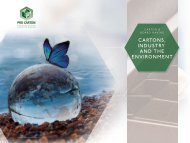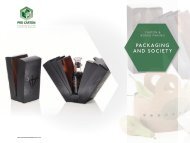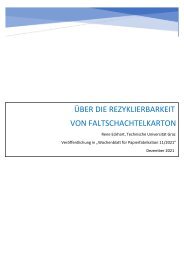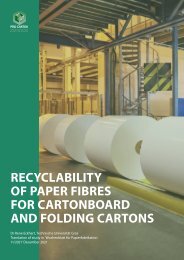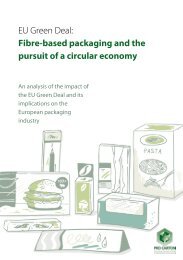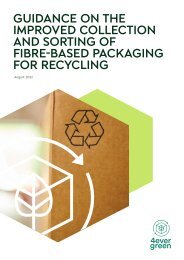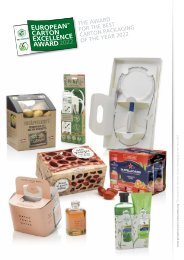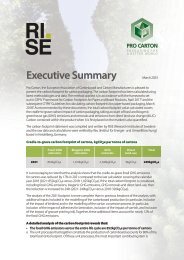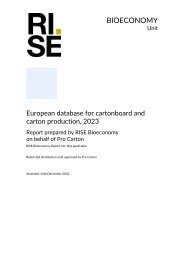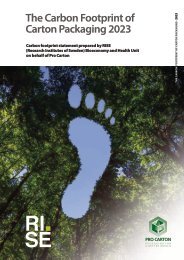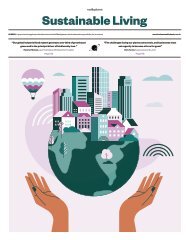European Database for Cartonboard and Carton Production 2023
Create successful ePaper yourself
Turn your PDF publications into a flip-book with our unique Google optimized e-Paper software.
30<br />
Figure 7<br />
Potential credit <strong>for</strong> reduction of substances in the effluent water<br />
Since only a few mills analyse their incoming water the available data cannot be<br />
considered as representative. There<strong>for</strong>e, only data <strong>for</strong> the emissions to the recipient are<br />
given, without taking into account the substances in the incoming water. Most of the<br />
cartonboard plants have internal wastewater treatment, <strong>and</strong> in some cases this is then<br />
further treated externally afterwards. In case the wastewater is not further treated<br />
externally <strong>and</strong> released to the environment, the emission level of substances is so low<br />
that reporting them is not required by authorities.<br />
Besides the substances reported in Table 4, very few plants have also given data on some<br />
of the following emissions: metals (Cadmium, Chromium, Lead, Nickel, Iron, Boron,<br />
Aluminium), Chlorine <strong>and</strong> Phosphorus. The amounts are below 0.001 kg/tonne nsp <strong>and</strong><br />
are not reported in the inventories.<br />
Allocation of emissions to paper grades when a mill produces more than one<br />
paper grade<br />
As far as waterborne emissions per m3 are measured <strong>for</strong> a mill, these data are well<br />
documented. The figures reported are usually based on continuous measurements<br />
according to control programmes set by official authorities. Given emissions to water are<br />
generally measured according to st<strong>and</strong>ard methodology, although <strong>for</strong> COD <strong>and</strong> BOD<br />
results can be significantly different if measured on a homogenous sample or on a settled<br />
sample. Where necessary, allocation between paper grades is done according to mass of<br />
produced paper grade.<br />
Data on emissions to water from the carton converting plants were also collected.<br />
However, the converting plants are not subject to Industrial Emissions legislation, <strong>and</strong><br />
there<strong>for</strong>e the quantity <strong>and</strong> quality of available data is inconsistent. This is further<br />
complicated by the fact that the cartonboard plants do not all have their own effluent<br />
treatment facilities or treat only certain aspects of the wastewater associated with specific<br />
processes (<strong>for</strong> example, ink recovery). Many plants discharge a proportion of their<br />
wastewater under specific agreement to public effluent treatment facilities <strong>and</strong><br />
there<strong>for</strong>e do not have access to data on the releases to the environment (after final<br />
treatment). For this reason, data representative of emissions after a public wastewater<br />
treatment plant should be considered <strong>for</strong> the waste emissions from the converting<br />
plants.<br />
© RISE Research Institutes of Sweden





